Review of the All-New 1200 Tiger XCA for Overland Travel
For 2018, Triumph has freshened their lineup to reduce weight and improve trail performance for both Tiger models, with the most significant capability changes coming to the 1200. The Tiger lineup has traditionally been a 60/40 offering with a bias toward upright touring. However, the new Triumph Tiger XCA variant changes all of that—big time!
Personally, I enjoy riding a 1200-class adventure motorcycle in the remote regions of the planet, and recently completed a solo trip from Cartagena, Colombia, to Lima, Peru, (and back to Colombia) on a 1200. It is common for travelers to dismiss these bikes for developing-world travel due to their size and complexity, but that is part of the reason they work so well. With over 100 hp per liter, these bikes pass immediately; and with massive brakes, they stop nearly as quickly. The larger size and profile also helps me be seen by other drivers. They know the difference between a local on a 125 and someone on a liter bike. The lighting, height, and width all add to visibility which translates to safety. This is not to say that a big bike is better, but in many cases, a big bike is better for me. For those who have tried to pass a long line of semi-trucks with a KLR on a two-lane highway in Peru, they know what I am talking about.
A 1200 is also a joy to ride daily and is the bike I typically commute on. Even a day-long trip to California is effortless on the motorcycle that stays with traffic and hardly registers wind or buffeting. There is also the fun of learning to ride it properly on the dirt, and there is a set of skills that comes with trying to negotiate rocks and ruts with something weighing over 500 pounds. This does not come easily, but a few days at a training course from Triumph, RawHyde, or D.A.R.T. sets the right foundation.
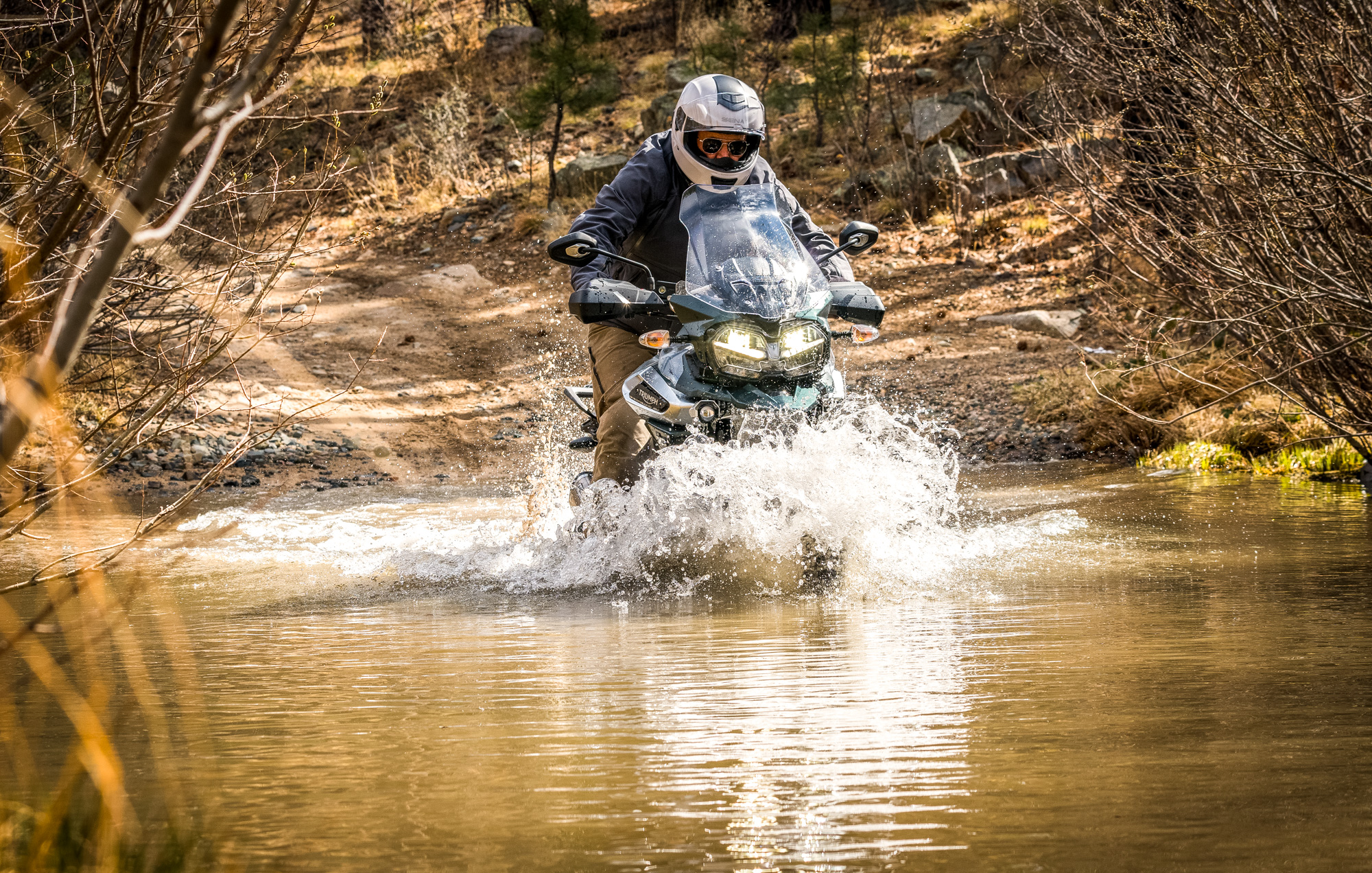
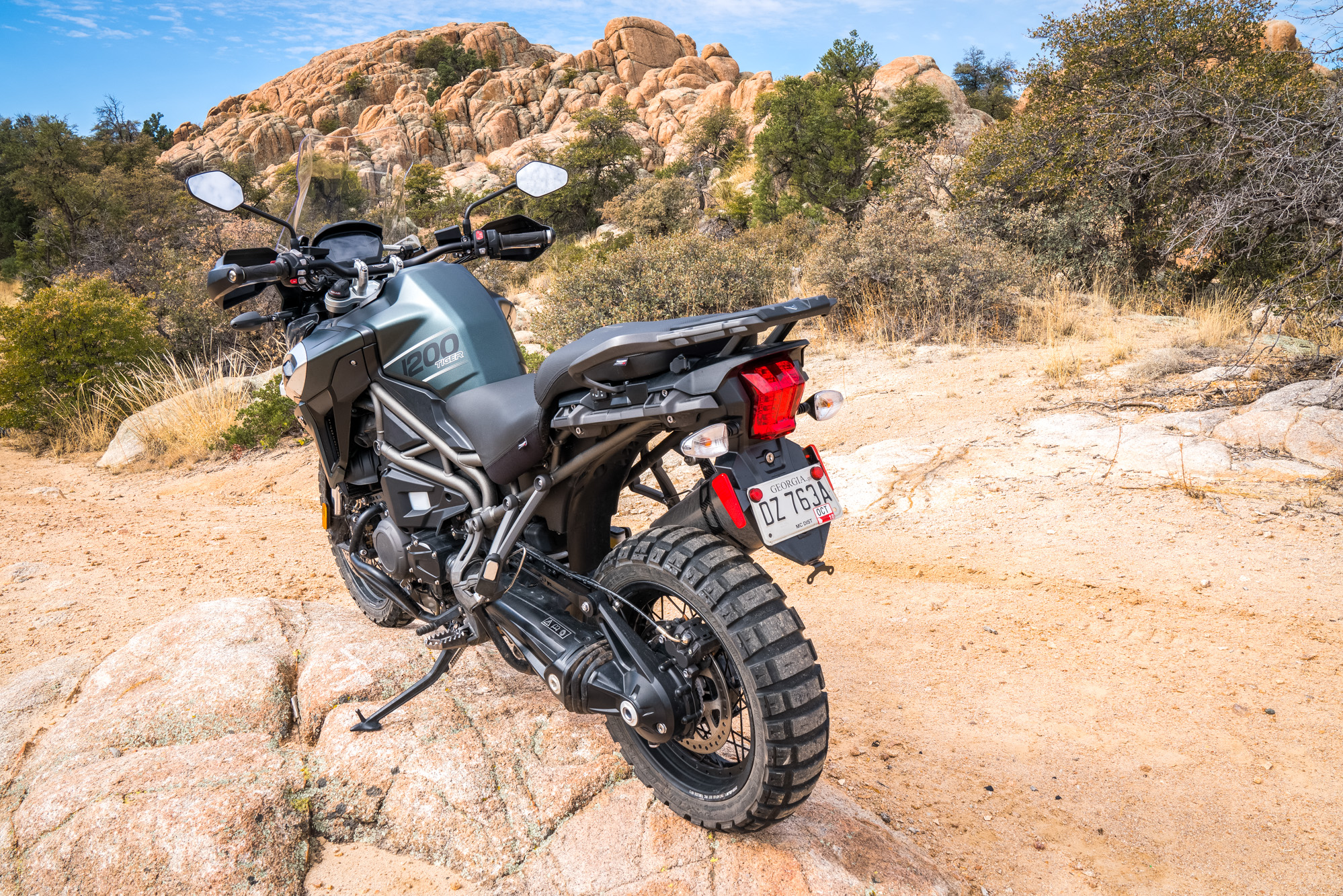
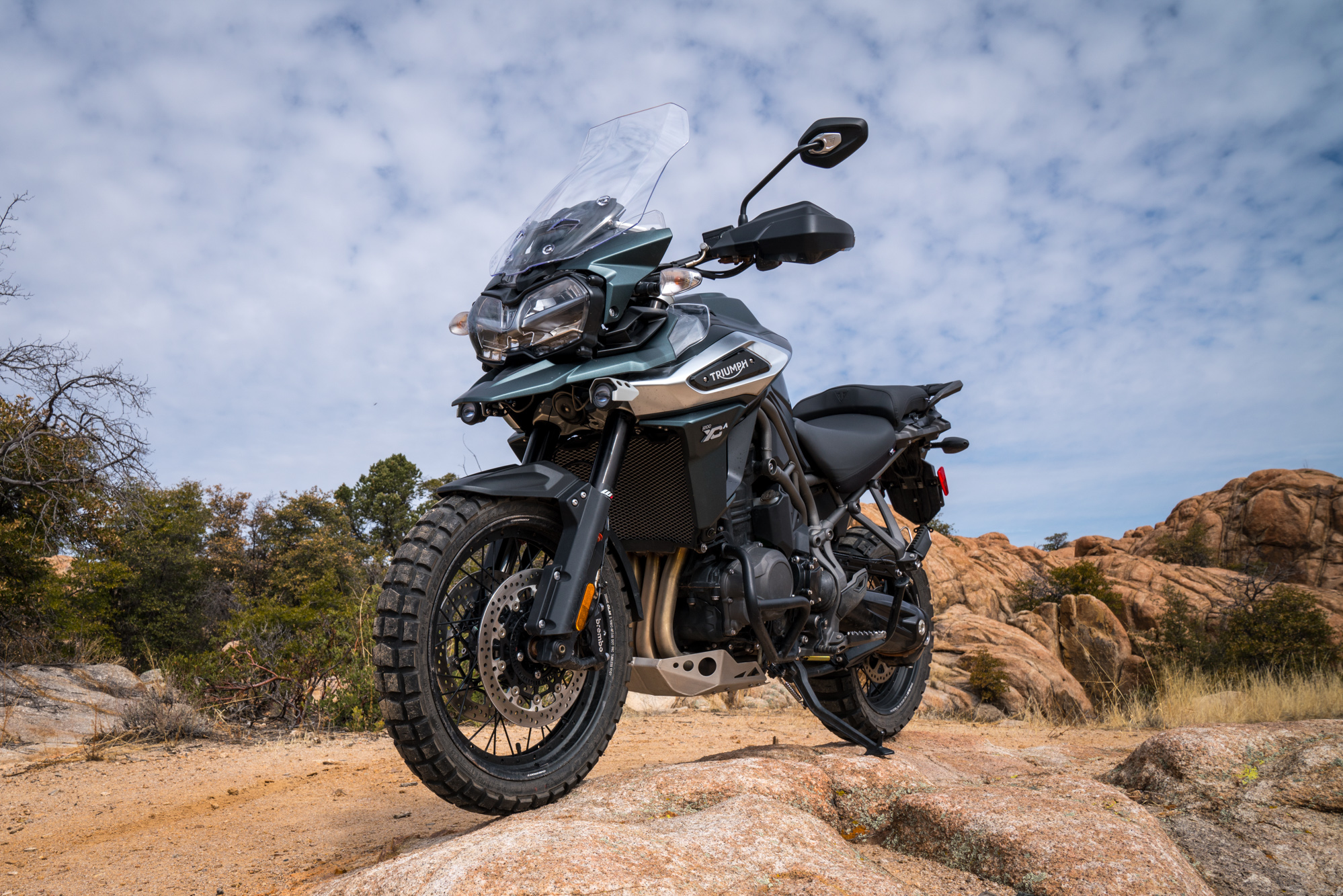
On the Road
One of the great advantages of a bigger adventure bike is on-road performance, the size and aerodynamics improving stability, and the larger motors providing effortless passing and cruising. With the new XCA, these benefits exist, combined with a long list of others. Starting from the front, the 19- inch wheel is stopped by Brembo monobloc brakes and damped by their new premium semi-active TSAS suspension. The brakes are seriously good, with excellent modulation and a light, predictable lever feel. Ride comfort is relaxed with a wide, electrically adjustable windscreen and additional wind protection from the body contours. In cold weather, the grips, rider seat, and pillion seat are all heated. Controls come quickly to hand and are displayed on the (very) easy to read five-inch TFT screen. Acceleration is blindingly fast, with 0-60 coming in less than three seconds. This bike is noticeably faster than the BMW GS, particularly over 5,000 RPM. Safety is also better with this new model, as both ABS and traction control are now enhanced for cornering conditions. For touring, a few things stand out as my favorites with this model change, the suspension being paramount. It is not only still comfortable (like the outgoing model), but with the adjustable damping and ride height, it adapts to load changes and varying conditions instantaneously. The adjustable windscreen and heated (everything) extended my riding season weeks earlier into the spring.

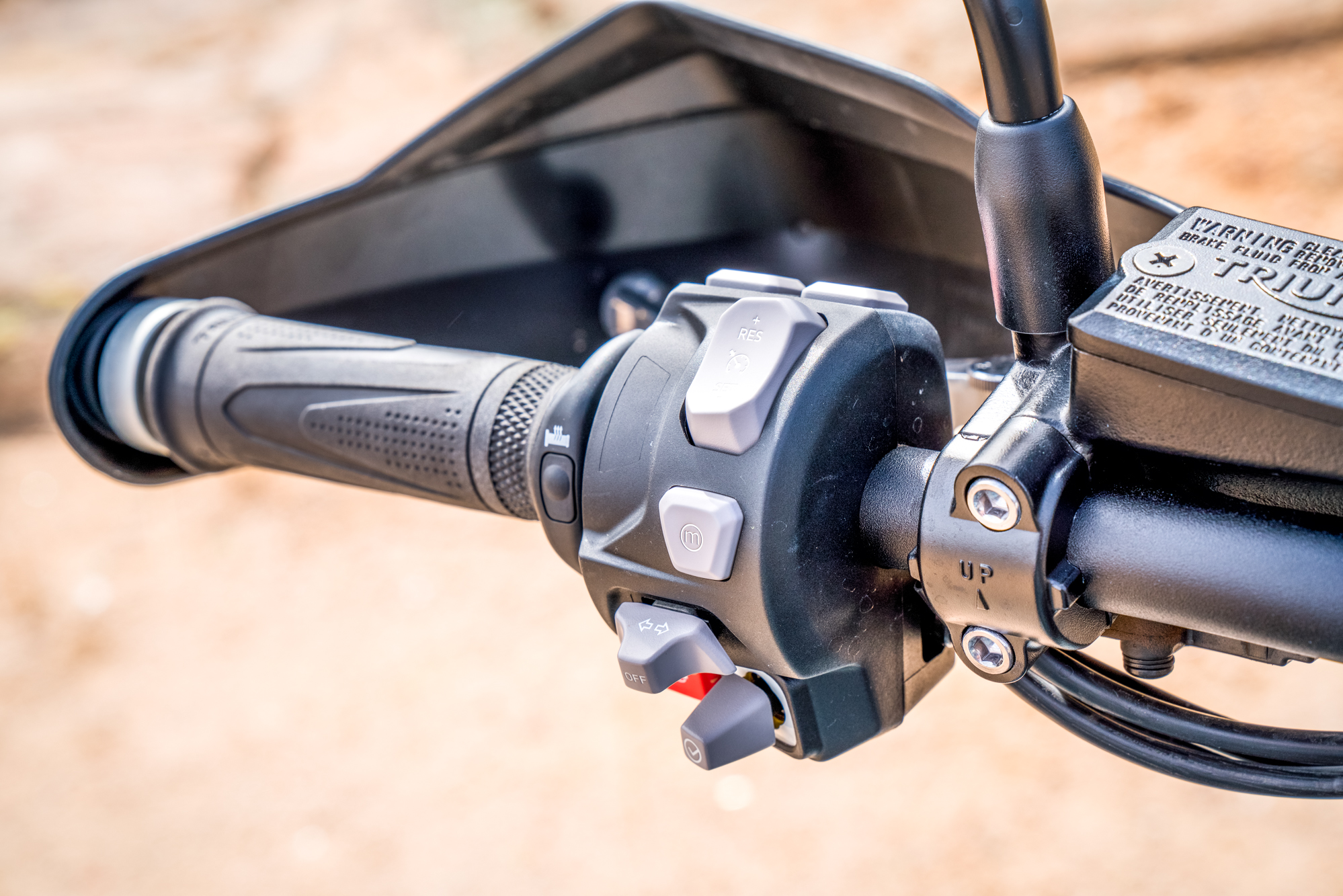
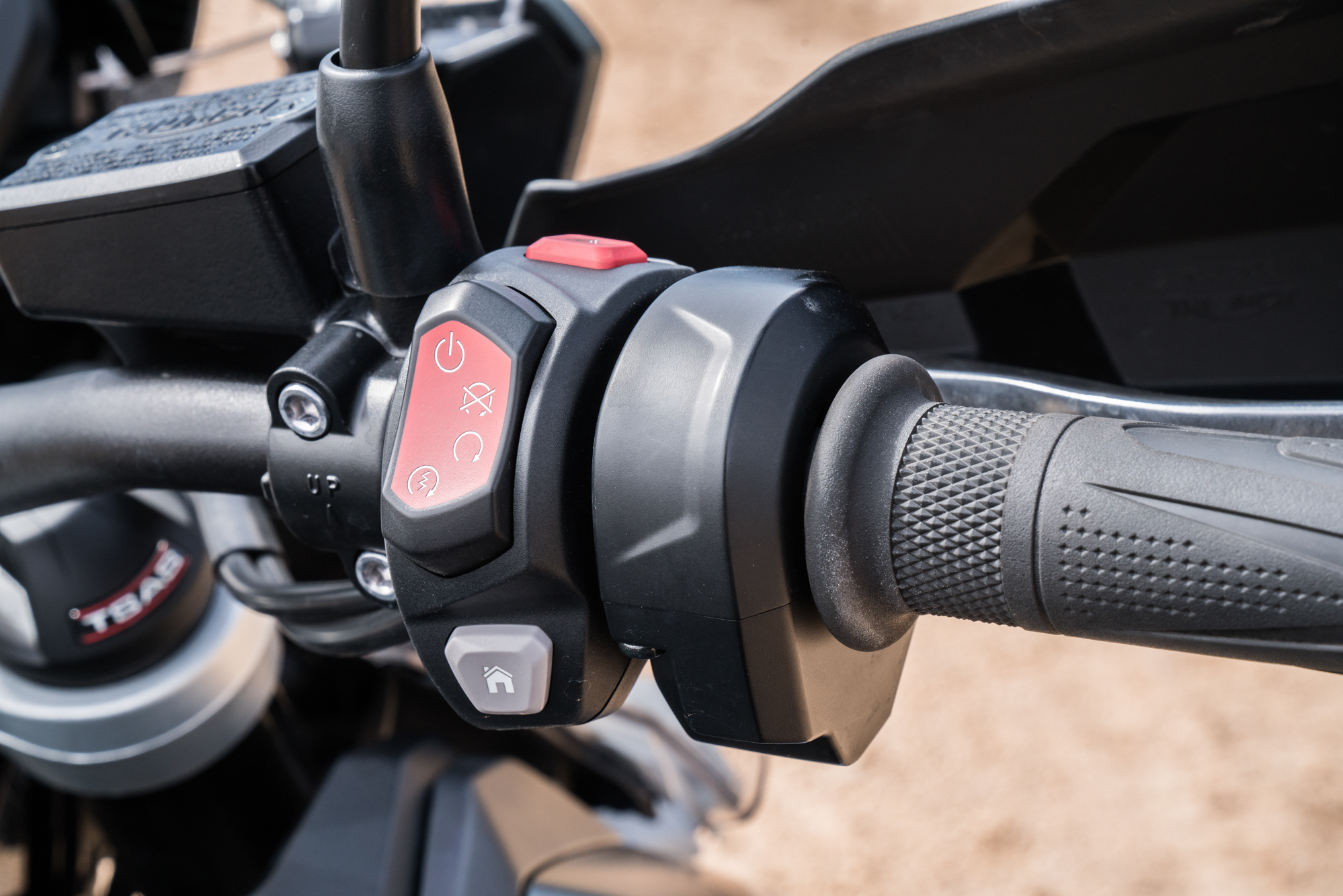
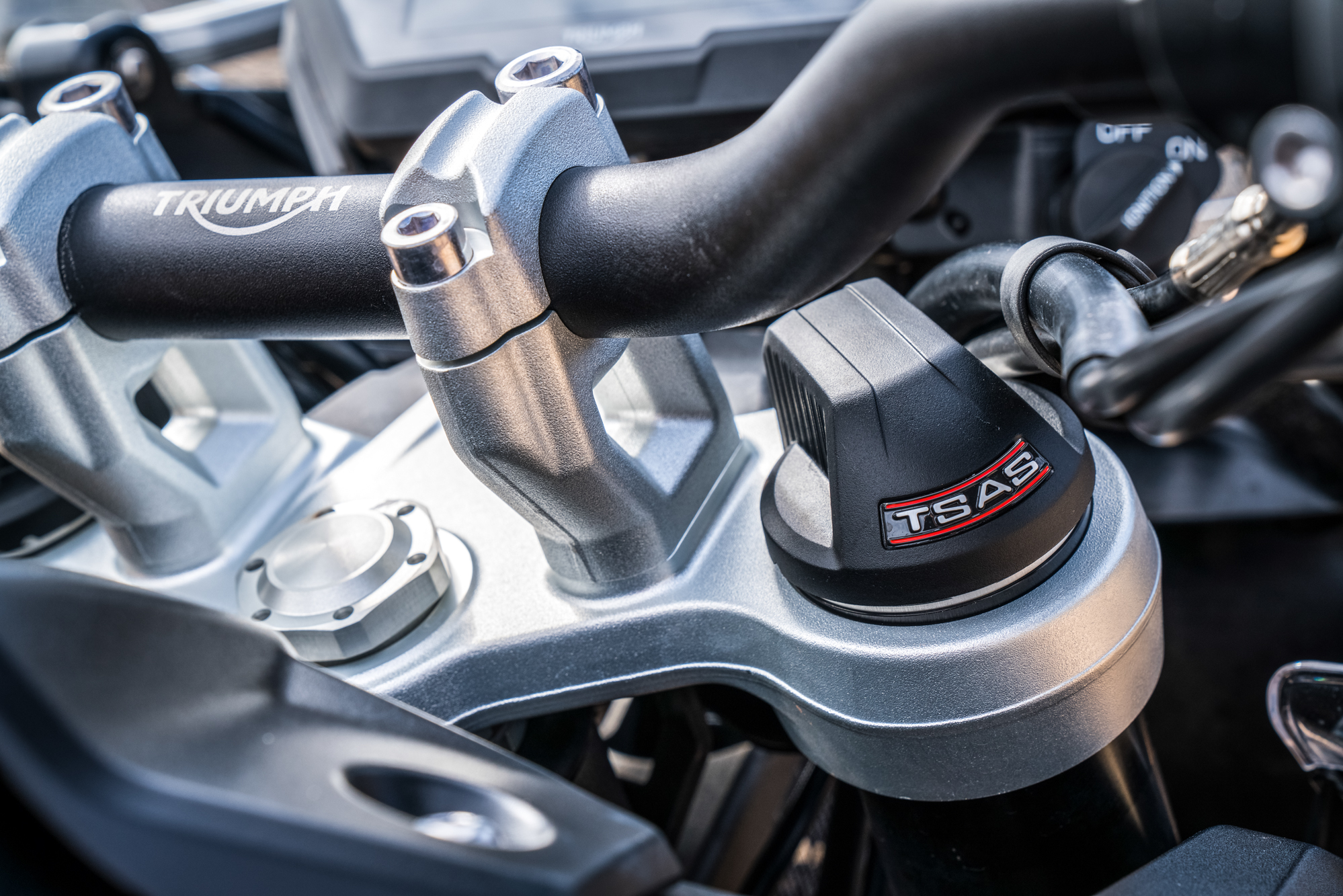
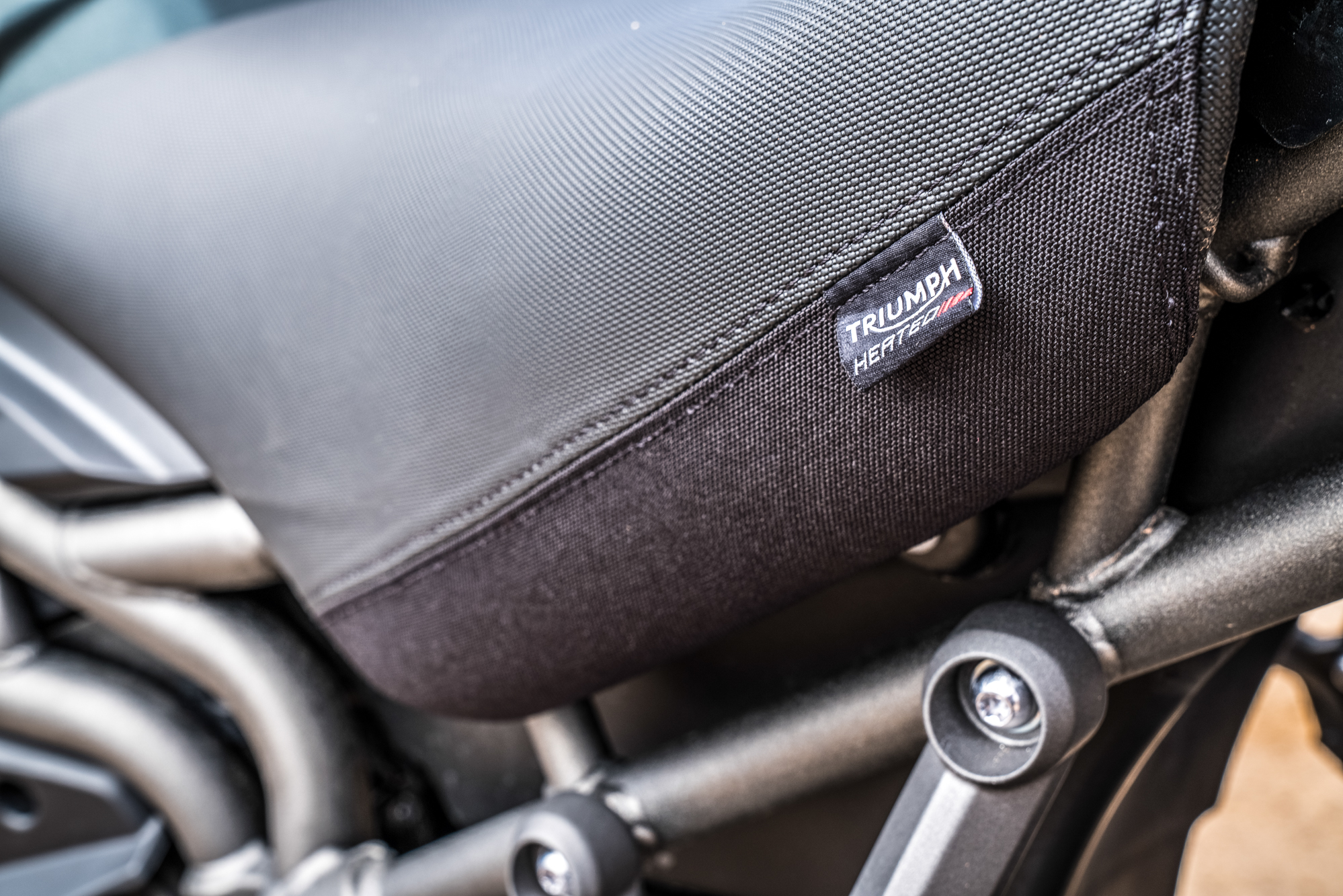


On the Dirt
The big adventure bikes are getting so much better in the dirt, and the 1200 Tiger XCA is no exception. The previous model worked well for gravel roads and moderate conditions, but the new XCA variant is truly a GS and KTM fighter. The WP suspension has 7.48 inches of suspension travel (7.6 rear) and the benefit of extensive valving and spring-rate adjustments. The Tiger no longer bottoms easy and generally stays securely planted, even in technical terrain. We exposed the model to rocks, ruts, water bars, low traction DG, and deep water crossings. The new rider modes allow for Off-Road and Off-Road Pro, which calibrates wheelspin control via traction control and braking ABS. I found both to work well and you can still go full manual and turn everything off. Our test model had aggressive Pirelli Scorpion knobbies front and rear, which also aided in the tractability and lateral grip on the dirt. Other items of note are the full-size aluminum pegs, factory skid plate, and crash bars. The XCA is also 22 pounds lighter than the outgoing model, and the controls provide better modulation and a lighter overall feel.
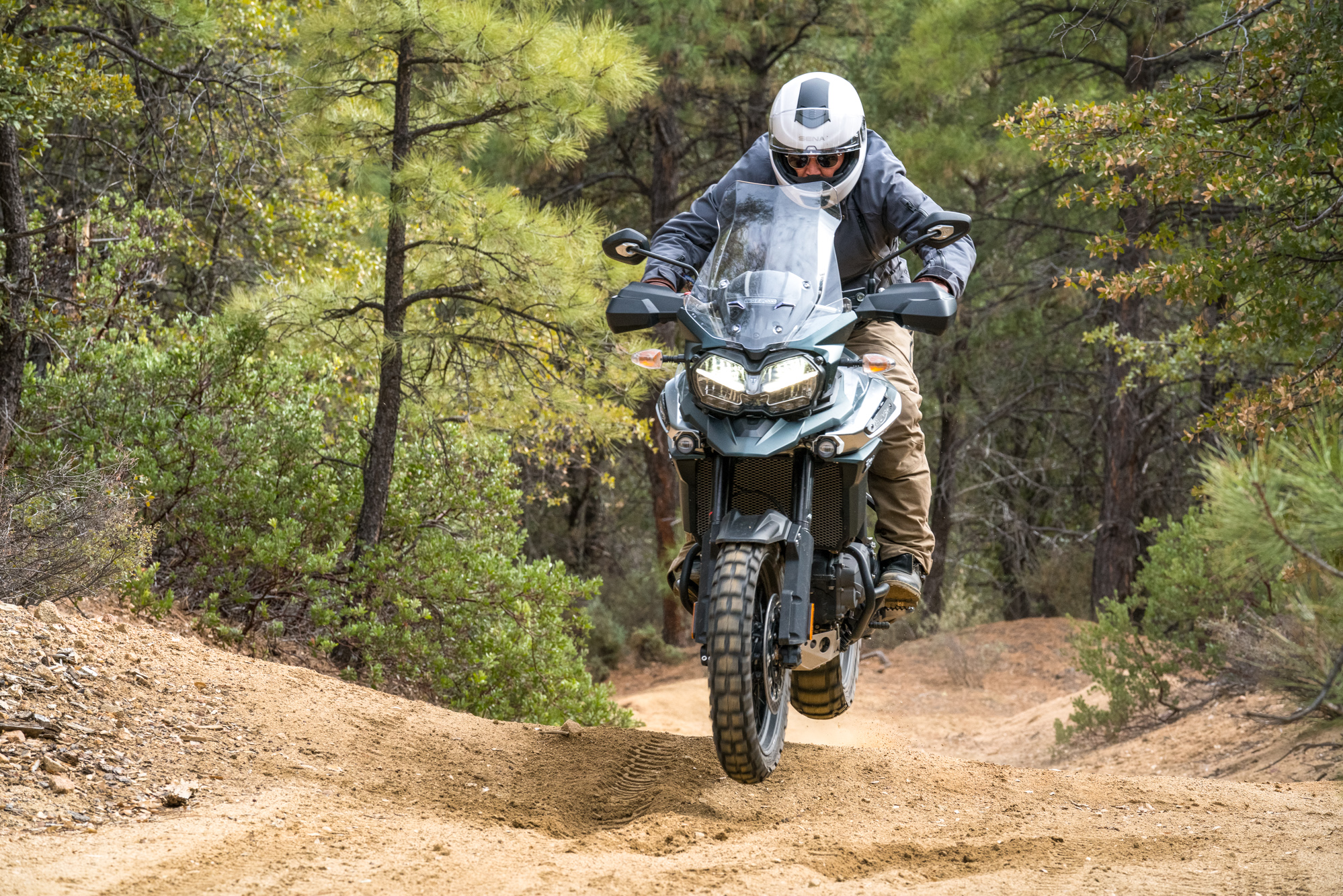


Overall, the new Tiger 1200 XCA is highly evolved and ready for real dirt and adventure travel. It feels aggressive, yet has retained a refinement that permits long days in the saddle. The power is impressive, probably way more than any condition off-road or in the developing world would warrant, but it is fun to know it is a twist of the throttle away. The WP suspension is a huge win and gave me the confidence to push the motorcycle harder and into more technical conditions. My criticisms are few, mostly focused on the limit ground clearance and skid plate shape, which caused contact on our test loop. I would also love to see a 7-gallon tank on the XCA for true 300-mile range in the wilds of Africa or Utah. We are in the golden age of big adventure bike performance, and every brand is pushing the other to improve and innovate. With this new model, Triumph has kept itself in the running for top ADV.
Pros
Incredible power
Excellent ergonomics and comfort
WP suspension inspires confidence on the dirt
Cons
Needs a 7-gallon tank for remote travel
Limited ground clearance and protection at the skid plate




One Comment
Mike Higgins
October 31st, 2018 at 3:40 pmThanks for the write up Scott. Nice work! The Tiger looks like a great bike and yes a 300 mile range would be great for the vast expanses of the American West.
Cheers,
Mike